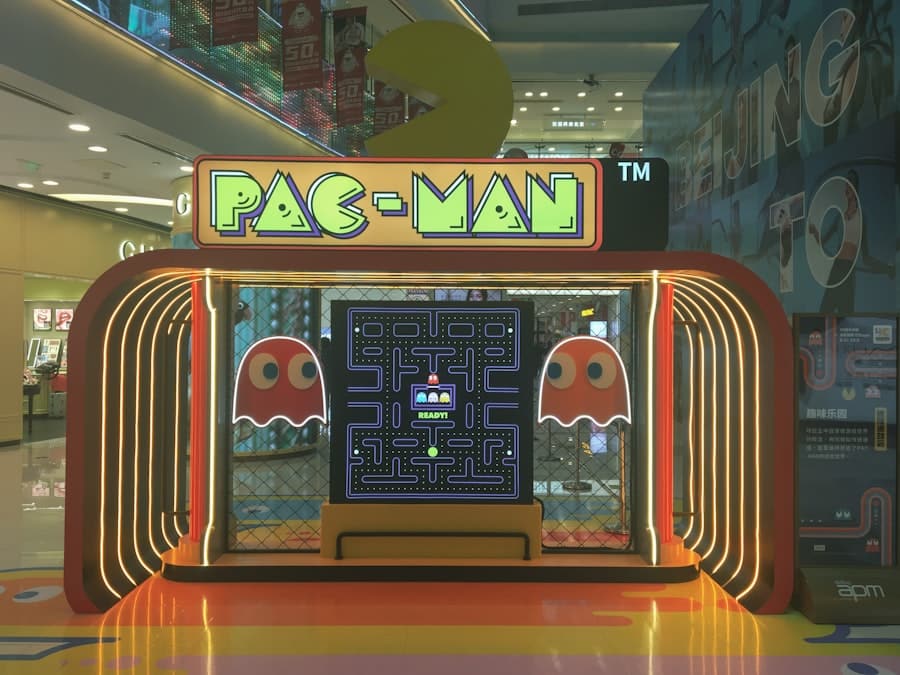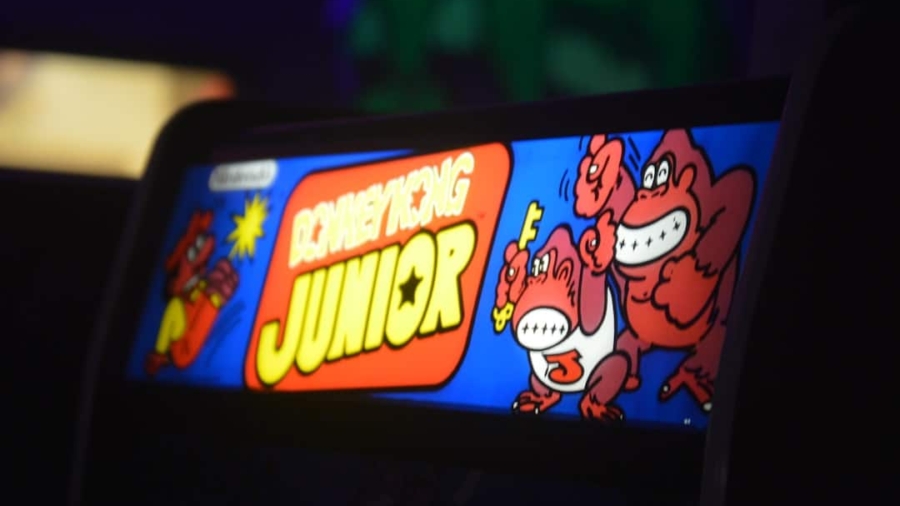The landscape of comics has undergone a significant transformation over the past few decades, evolving from traditional print formats to more dynamic and interactive experiences. The rise of interactive comics can be traced back to the advent of digital technology, which has allowed creators to experiment with storytelling in ways that were previously unimaginable. Early examples of interactive comics emerged in the late 1990s and early 2000s, when webcomics began to incorporate multimedia elements such as animations, sound effects, and hyperlinks.
These innovations laid the groundwork for a new genre that would blend the visual storytelling of comics with the interactivity of video games. As technology advanced, so too did the complexity and depth of interactive comics. Platforms like iPads and smartphones provided creators with the tools to develop rich, immersive narratives that could engage readers on multiple levels.
This shift not only attracted a new generation of comic enthusiasts but also encouraged established creators to experiment with the medium. The rise of interactive comics has led to a flourishing ecosystem where traditional comic book publishers and independent creators alike are exploring this innovative format, resulting in a diverse array of stories that cater to various tastes and preferences.
Key Takeaways
- Interactive comics have seen a rise in popularity due to advancements in technology and the desire for more immersive storytelling experiences.
- Gaming has had a significant influence on interactive comics, with elements such as branching storylines and player choice becoming more prevalent.
- The evolution of storytelling in interactive comics has led to more dynamic and engaging narratives, blurring the lines between traditional comics and video games.
- Player choice plays a crucial role in interactive comics, allowing readers to have a direct impact on the outcome of the story and creating a more personalized experience.
- Technology has had a profound impact on interactive comics, enabling features such as animation, sound effects, and interactive elements to enhance the storytelling experience.
The Influence of Gaming on Interactive Comics
Narrative Techniques and Gameplay Mechanics
Many interactive comics now incorporate branching narratives, where readers can make choices that affect the outcome of the story, mirroring the decision-making processes found in role-playing games (RPGs). This cross-pollination has enabled interactive comics to offer a more dynamic and engaging storytelling experience.
Aesthetics and Visual Language
The aesthetics of gaming have also made their mark on interactive comics. The use of vibrant colors, dynamic panel layouts, and animated sequences has become increasingly common, creating a visual language that resonates with gamers. This fusion of styles has enabled interactive comics to appeal to a broader audience.
New Frontiers in Storytelling
Titles like “The Walking Dead: The Game” exemplify this trend, as they blend comic book art styles with gameplay mechanics that allow players to influence character relationships and story arcs. This fusion not only enhances the storytelling experience but also attracts a broader audience that may not have previously engaged with traditional comics.
The Evolution of Storytelling in Interactive Comics

Storytelling in interactive comics has evolved significantly, moving beyond linear narratives to embrace complexity and interactivity. Traditional comics often rely on a fixed sequence of events, but interactive comics allow for multiple pathways and outcomes based on reader choices. This evolution has led to a more participatory form of storytelling, where readers are not merely passive consumers but active participants in shaping the narrative.
For example, titles like “Choices: Stories You Play” offer readers a plethora of scenarios where their decisions can lead to vastly different endings, creating a sense of agency that is often absent in conventional comic formats. Furthermore, the integration of multimedia elements has enriched storytelling possibilities within interactive comics. Soundtracks, voice acting, and animated sequences can enhance emotional engagement and provide context that complements the visual narrative.
This multi-sensory approach allows creators to convey complex themes and character development in ways that traditional comics may struggle to achieve. As a result, interactive comics have become a platform for exploring intricate narratives that resonate with diverse audiences, pushing the boundaries of what storytelling can encompass.
The Role of Player Choice in Interactive Comics
Player choice is a cornerstone of interactive comics, fundamentally altering how stories are experienced and understood. Unlike traditional comics where the narrative is predetermined by the creator, interactive comics empower readers to make decisions that influence character arcs and plot developments. This element of choice fosters a deeper connection between the reader and the story, as individuals become invested in the outcomes shaped by their decisions.
For instance, in “Life is Strange,” players navigate through a series of choices that not only affect immediate consequences but also ripple through the overarching narrative, creating a sense of weight and responsibility. The significance of player choice extends beyond mere entertainment; it also invites readers to reflect on their values and beliefs. By presenting moral dilemmas and challenging scenarios, interactive comics encourage readers to consider the implications of their choices within the context of the story.
This engagement can lead to meaningful discussions about ethics, relationships, and personal growth, making interactive comics not just a form of escapism but also a medium for introspection and dialogue.
The Impact of Technology on Interactive Comics
Technology has been a driving force behind the evolution of interactive comics, enabling creators to push the boundaries of what is possible within this medium. The proliferation of smartphones and tablets has made interactive comics more accessible than ever before, allowing readers to engage with stories anytime and anywhere. Additionally, advancements in software development have facilitated the creation of sophisticated tools for artists and writers, enabling them to craft intricate narratives with ease.
Platforms like Twine and Unity have democratized game development, allowing independent creators to produce high-quality interactive experiences without the need for extensive resources. Moreover, emerging technologies such as virtual reality (VR) and augmented reality (AR) are poised to revolutionize the way interactive comics are experienced. VR can transport readers into fully realized worlds where they can interact with characters and environments in unprecedented ways.
AR can overlay digital elements onto the physical world, creating an immersive experience that blurs the line between fiction and reality. These technological advancements hold immense potential for expanding the scope of interactive comics, offering new avenues for storytelling that engage audiences on multiple sensory levels.
The Challenges of Balancing Narrative and Gameplay in Interactive Comics

While the integration of gameplay mechanics into interactive comics offers exciting possibilities, it also presents unique challenges for creators. Striking a balance between narrative depth and gameplay engagement is crucial; if one aspect overshadows the other, it can detract from the overall experience. For instance, if gameplay mechanics become overly complex or distracting, they may pull readers out of the story rather than enhancing it.
Conversely, if the narrative takes precedence without allowing for meaningful interaction, readers may feel like passive observers rather than active participants. Additionally, maintaining coherence within branching narratives can be daunting for creators. As stories become more intricate with multiple pathways and endings, ensuring that character development remains consistent across different choices becomes increasingly challenging.
This complexity requires careful planning and consideration during the writing process to avoid plot holes or inconsistencies that could undermine reader immersion. Successful interactive comics must navigate these challenges while delivering a seamless experience that captivates audiences from start to finish.
The Future of Interactive Comics and Gaming
The future of interactive comics is poised for continued growth as technology advances and audiences become more receptive to innovative storytelling formats. As gaming continues to evolve, it is likely that interactive comics will further integrate elements from this medium, creating even more immersive experiences for readers.
Moreover, as creators experiment with new technologies such as AI-driven narratives or procedurally generated content, we may see entirely new forms of storytelling emerge within interactive comics. These innovations could lead to personalized experiences tailored to individual reader preferences or adaptive narratives that respond dynamically to player choices. As boundaries blur between gaming and comic storytelling, we can anticipate an exciting future where interactive comics continue to captivate audiences through rich narratives and engaging gameplay.
Exploring the Potential of Interactive Comics for Engaging New Audiences
Interactive comics hold immense potential for engaging new audiences who may not traditionally identify as comic book fans or gamers. By leveraging multimedia elements and participatory storytelling techniques, these works can attract individuals from diverse backgrounds who seek unique forms of entertainment. For example, educational institutions have begun exploring interactive comics as tools for teaching complex subjects such as history or science.
By presenting information through engaging narratives that allow for exploration and discovery, educators can foster greater interest in learning among students. Furthermore, interactive comics can serve as a bridge between generations by appealing to both younger audiences familiar with gaming culture and older readers who appreciate traditional storytelling methods. This cross-generational appeal can foster community engagement around shared narratives while encouraging discussions about themes relevant across age groups.
As creators continue to innovate within this space, there is significant potential for interactive comics to become a mainstream medium that resonates with an even broader audience than ever before.
If you are interested in exploring the world of animation further, you may want to check out this article on the best software for 3D animation here. This article provides valuable insights into the top tools available for creating stunning 3D animations. It can be a great resource for those looking to enhance their skills in this field and create more immersive interactive comics or games.
FAQs
What are interactive comics?
Interactive comics are a form of digital storytelling that allows readers to engage with the narrative by making choices that affect the outcome of the story. This can include branching storylines, interactive elements, and game-like mechanics.
How do interactive comics blur the line with games?
Interactive comics blur the line with games by incorporating elements of interactivity and player agency typically found in video games. This can include decision-making, puzzle-solving, and exploration, creating a more immersive and participatory reading experience.
What are some examples of interactive comics?
Examples of interactive comics include “The Walking Dead” series by Telltale Games, “Life is Strange” by Dontnod Entertainment, and “Batman: The Telltale Series” by Telltale Games. These titles combine traditional comic book storytelling with interactive gameplay mechanics.
What are the benefits of interactive comics?
Interactive comics offer readers a more engaging and personalized experience, allowing them to become active participants in the story. This can lead to increased immersion, emotional investment, and replay value, as readers explore different narrative paths and outcomes.
How are interactive comics created?
Interactive comics are created using a combination of traditional comic book art and storytelling techniques, along with interactive design and programming. This can involve collaboration between writers, artists, and game developers to create a seamless blend of narrative and interactivity.

